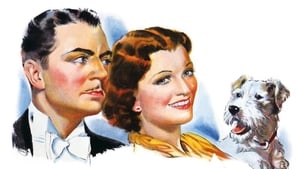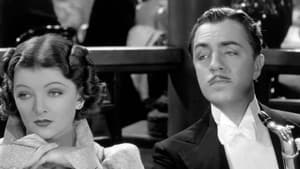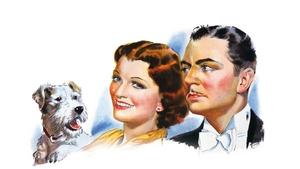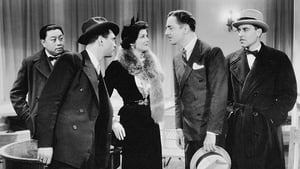Video Sources 0 Views
- Watch trailer
- After the Thin Man 1936 Colorized

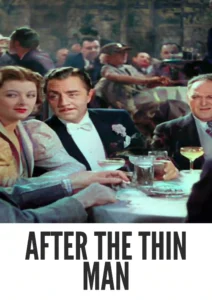
Synopsis
Table of Contents
ToggleMartinis, Murder, and Merriment: After the Thin Man (1936) in Vibrant Color

Step back into the glamorous world of the 1930s with After the Thin Man, a sparkling comedy mystery from 1936, now beautifully colorized for a viewing experience that pops! Starring the impeccable William Powell and the dazzling Myrna Loy, this sequel to The Thin Man delivers a delightful blend of wit, charm, and suspense. Perfect for fans of classic cinema and those who appreciate a good whodunit, this HD download brings the sophisticated sleuthing of Nick and Nora Charles to life like never before.
After the Thin Man Storyline: A New Case, A New Adventure
After the Thin Man follows sophisticated married couple Nick (William Powell) and Nora Charles (Myrna Loy) as they return to San Francisco for New Year’s celebrations. However, their holiday is soon interrupted when they become embroiled in a perplexing murder case involving Nora’s socialite cousin, Selma.Selma is in a bind. Her former fiancé, Robert, has gone missing, and all fingers point to her current love interest, David. Nick and Nora, never ones to shy away from a good mystery, dive into a world of secret rendezvous, shady characters, and startling revelations. As they investigate, they encounter a colorful cast of suspects, each with their own motives and secrets. With their trademark wit and charm, the dynamic duo unravels a complex web of deceit. The film culminates in a thrilling climax where the true killer is revealed, proving once again that when Nick and Nora are on the case, no stone is left unturned. After the Thin Man is a delightful blend of humor and suspense.
Movie Cast
The film features a stellar cast of actors who bring this witty and engaging story to life:
- William Powell as Nick Charles
- Myrna Loy as Nora Charles
- James Stewart as David Graham
- Elissa Landi as Selma Landis
- Joseph Calleia as Dancer
Movie Genre
After the Thin Man falls into the genre of comedy mystery, blending humor, romance, and suspense. Its witty dialogue, charming characters, and intricate plot make it a standout in classic cinema.
Historical Context: The Golden Age of Hollywood
Released in 1936, After the Thin Man exemplifies the glamour and sophistication of Hollywood’s Golden Age. The film was produced during a time when moviegoers sought escapism and entertainment, and After the Thin Man delivered on both fronts. As a sequel to the successful The Thin Man, it further solidified the popularity of Nick and Nora Charles as iconic cinematic detectives. The film reflects the social and cultural trends of the era. After the Thin Man offers valuable insights into the cinematic landscape of the 1930s.
Colorization Details
This colorized version of After the Thin Man has been meticulously restored using modern digital techniques, enhancing the visual appeal while preserving the film’s original charm and sophistication. The colorization process involved carefully analyzing the grayscale tones of the original black and white footage and assigning appropriate colors to each scene. While the specific software used remains proprietary, the techniques employed included advanced algorithms for color palette selection and image enhancement. This painstaking process brings new life to the characters and settings, making the story even more engaging for modern audiences. While some may debate the merits of colorizing classic films, it introduces these films to a broader audience, ensuring their legacy for future generations.
Technical Details
- Director: W.S. Van Dyke
- Screenplay: Frances Goodrich, Albert Hackett
- Based on: a story by Dashiell Hammett
- Cinematography: Oliver T. Marsh
- Edited by: Robert J. Kern
- Production Company: Metro-Goldwyn-Mayer
- Distributed by: Metro-Goldwyn-Mayer
- Runtime: 113 minutes
Technical Specifications
- Download Format: MP4
- Resolution: HD (1080p)
- Compatibility: Compatible with most devices, including smartphones, tablets, computers, and smart TVs.
Reviews and Critical Reception
After the Thin Man (1936) is celebrated for its witty dialogue, engaging plot, and the sparkling chemistry between William Powell and Myrna Loy. As a sequel that lives up to the original, it remains a beloved classic and a prime example of the screwball comedy mystery genre. After the Thin Man provides a delightful and entertaining cinematic experience that continues to captivate audiences today.
FAQs
- Q: What is After the Thin Man about?
- A: After the Thin Man is a comedy mystery about Nick and Nora Charles solving a murder case in San Francisco.
- Q: Is After the Thin Man (1936) a sequel?
- A: Yes, After the Thin Man is a sequel to the original film, The Thin Man (1934).
- Q: Is this version of After the Thin Man colorized?
- A: Yes, this version has been professionally colorized to enhance the viewing experience.
- Q: What makes After the Thin Man interesting for classic film fans?
- A: After the Thin Man showcases the wit, charm, and sophisticated storytelling of Hollywood’s Golden Age.
- Q: What is the download format?
- A: The download format is MP4, which is compatible with most devices.
- Q: What resolution is the download?
- A: The resolution is HD (1080p), providing a high-quality viewing experience.
Download Now in HD!
Watch After the Thin Man Today!

